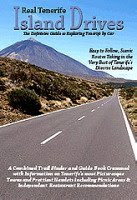One recurring conversation I hear on a semi-regular basis concerns Tenerife and the affect tourism has had on the island.
Recently in Masca I heard two British couples discussing the charming hamlet. One of them had been before and commented that it had lost some of its charm since it became a popular tourist attraction.
Not having been to the place before it became a tourist attraction, I wouldn't know about that. But Masca still holds bucket loads of charm as far as I'm concerned. The money that the tourists bring help it to remain an immaculate thriving little hamlet.
 Last week I visited another very picturesque hamlet in a valley, but the difference with this one was that there were no tourists and most of the houses in the village were abandoned. Its downfall was partly to do with the rise of tourism on the coast way below.
Last week I visited another very picturesque hamlet in a valley, but the difference with this one was that there were no tourists and most of the houses in the village were abandoned. Its downfall was partly to do with the rise of tourism on the coast way below.I think it's an interesting comparison. Two beautiful rural locations; one arguably saved by tourism, the other possibly destroyed by it.
Another thing I heard recently was from someone who had just been to La Gomera.
“It's what Tenerife was like before tourism,” was how the person described it.
I've heard and read this a number of times and have got to confess that I'm not sure what it really means. Think about the biggest tourist developments in the south of Tenerife. What was there before tourism?
I've got a great little guidebook for Tenerife from 1969 which lists accommodation around the island. On the south coast there are only a handful of places in Los Cristianos, Las Galletas and El Médano and that was it. No Las Américas or Costa Adeje. They didn't exist; they're not towns which have been turned into resorts. There was nothing there and there definitely wasn't green countryside and quaint little farms. So not like La Gomera at all.
Tourism has clearly had an enormous impact on Tenerife, but it has on all the islands. There are valleys in La Gomera which are almost deserted because families have left to work in the tourist industry. I wonder if families from La Gomera visit Masca, think of the abandoned hamlets they hail from and comment, 'it's just like La Gomera before tourism.'
If anyone really believes that La Gomera is like Tenerife was before tourism, continue into the next valley beyond Masca, or take a tour of the Anaga Mountains, veering off down roads signposted to places like Afur or Batán. The truth is there are plenty of parts of Tenerife that are still exactly like Tenerife before tourism.
So here's a little test - which of the photos above are La Gomera and which are Tenerife?







